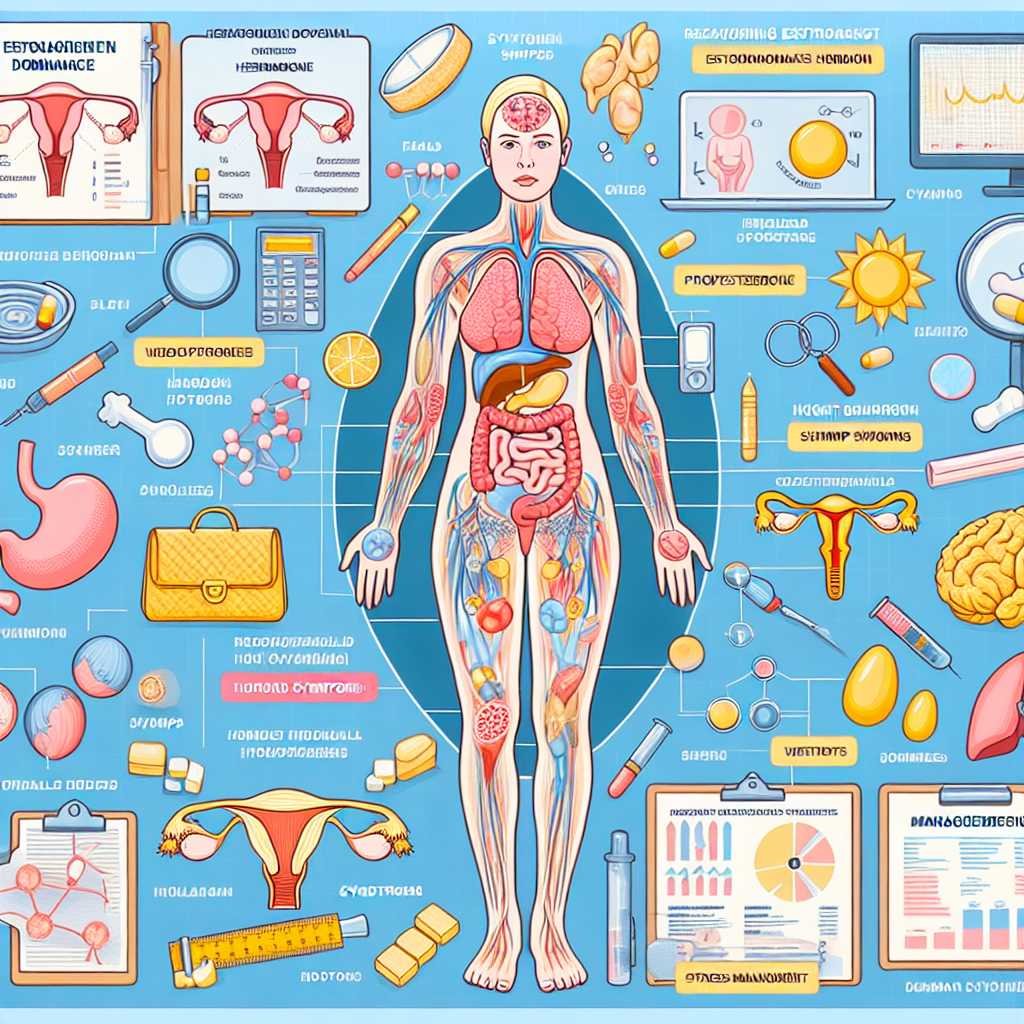Introduction
Estrogen is a vital hormone that plays numerous roles in the body, particularly in regulating female reproductive functions and supporting cognitive health. However, when estrogen levels become elevated relative to progesterone, a condition known as estrogen dominance can occur. This article explores the signs and symptoms of estrogen dominance, its causes, and potential treatments.

What Is Estrogen Dominance?
Estrogen is a group of hormones essential for the development and regulation of the female reproductive system, including the menstrual cycle and pregnancy. It also contributes to cognitive health, bone density, cardiovascular health, and other critical bodily functions. While the ovaries are the primary source of estrogen, the adrenal glands and fat cells also produce smaller amounts.
There are three primary forms of estrogen:
- Estrone (E1): The main form produced after menopause.
- Estradiol (E2): The dominant form during reproductive years.
- Estriol (E3): The primary form during pregnancy.
Estrogen dominance arises when estrogen levels are disproportionately high compared to progesterone, which is crucial for maintaining pregnancy and overall hormonal balance.
Common Signs of Estrogen Dominance
Individuals experiencing estrogen dominance may notice a variety of symptoms, including:
- Full and tender breasts
- Irregular menstrual cycles
- Increased premenstrual symptoms
- Insomnia
- Mood fluctuations
- Hot flashes
Causes of Elevated Estrogen Levels
High estrogen levels can result from various factors, including:
Excess Estrogen Production
Conditions like polycystic ovary syndrome (PCOS) can lead to the overproduction of estrogen.
Medications and Hormonal Treatments
Certain medications, hormone replacement therapy (HRT), and in vitro fertilization (IVF) can disrupt the natural hormonal balance, necessitating careful monitoring by healthcare professionals.
Xenoestrogens
Xenoestrogens are synthetic compounds found in some plastics and pesticides that mimic estrogen in the body. The World Health Organization (WHO) has linked these endocrine-disrupting chemicals to various health issues, including reproductive dysfunction and increased cancer risk.
Estrogen Detoxification
The liver plays a crucial role in metabolizing estrogen. If the liver is unable to effectively break down and eliminate estrogen, it can lead to elevated levels in the body.

Symptoms of Estrogen Dominance
Symptoms can vary widely among individuals. Keeping a wellness journal can help track symptoms and identify patterns related to hormonal fluctuations.
PMS and PMDD
Many women experience premenstrual syndrome (PMS), which can be exacerbated by estrogen dominance. Symptoms may include:
- Bloating
- Fatigue
- Mood swings
- Headaches
In severe cases, premenstrual dysphoric disorder (PMDD) may occur, characterized by significant emotional and physical distress.
Irregular Menstrual Cycles
A typical menstrual cycle lasts about 28 days. Cycles shorter than 21 days or longer than 35 days may indicate hormonal imbalances, including estrogen dominance.
Decreased Libido
Estrogen dominance can negatively impact sex drive, particularly during the luteal phase of the menstrual cycle when progesterone levels rise.
Emotional Distress
High estrogen levels have been linked to increased risks of anxiety and depression. Natural remedies, such as exercise and dietary changes, may help alleviate these symptoms.
Bloating and Hot Flashes
Bloating can result from water retention associated with high estrogen levels. Hot flashes, often experienced during perimenopause or menopause, can also be exacerbated by estrogen dominance.
Managing Estrogen Dominance
Addressing estrogen dominance involves a multi-faceted approach, including dietary changes, lifestyle adjustments, and possibly medical interventions. Here are some strategies:
- Maintain a healthy weight
- Reduce stress through mindfulness and relaxation techniques
- Consume a diet rich in whole, high-fiber foods
- Limit alcohol intake
- Consider supplements like DIM (diindolylmethane) to support estrogen detoxification
Consulting a Healthcare Professional
If you suspect you have estrogen dominance, it is essential to consult a healthcare provider. They can conduct a comprehensive hormone panel to assess your hormone levels and identify any underlying issues.
By understanding estrogen dominance and its implications, individuals can take proactive steps toward achieving hormonal balance and overall well-being.
Conclusion
Estrogen dominance is a complex condition that can significantly impact health and quality of life. By recognizing the signs and symptoms and seeking appropriate treatment, individuals can work towards restoring hormonal balance and improving their health.
For further information and personalized advice, consider consulting a registered dietitian or healthcare professional.
References:
- World Health Organization (WHO) – Endocrine Disrupting Chemicals
- Research on the effects of estrogen on mental health

